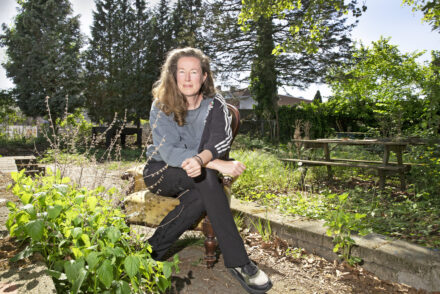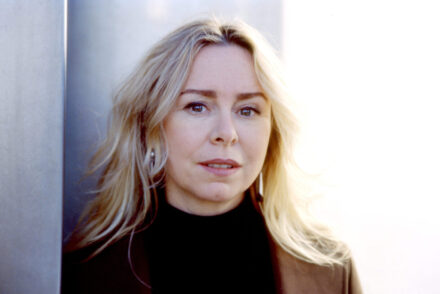Analysis: concept strategic plan
How will Tilburg University distinct itself from other universities? After seven meetings where almost six hundred students, employees en invitees discussed the future of the university, the executive board presented a concept version of the strategic plan. Univers followed the process closely and analyzed the plan. Univers focused on logic, coherence and vision of the plan.
To know what can be improved, it must be clear what is going wrong. So let’s start there. Tilburg University was founded with two goals: providing education and doing scientific research. Of couse, both these activities are pursued, but the quality had led to discussions. Students (via the National Student Survey) are critical of the quality of education, and the position of Tilburg University on international rankings sometimes fails to satisfy. It’s not extraordinary that Tilburg University wants to invest in the quality of research and education. However, a sizeable investment is needed to match the highest international standards. Thousands of Euros will not suffice, nor will a million. And the money isn’t stored in some savings account. Tilburg University once had sizable general reserves, but these reserves have all but dried up – due to the government unexpectedly economizing on the funding of universities in 2011.
There’s little money left in TiU’s savings account, but the money for the plans still has to come from somewhere. Asking the government for funding is pointless: government funding (the primary source of money for universities) diminishes annually. Tilburg University has to allocate its money . “Choosing for a lean, decisive and flexible organization”, reads the strategic plan. “Our organization is not transparant, complex and fragmented”, says the Executive Board. The board members have a point: there’s room to optimize the organization. A decade ago, Tilburg University opted to decentralize. Some support services are still provided centrally (i.e. for the whole university): like student services. At the same time every school has its own IT- en HR-department. Back then, it seemed like a sound plan, because specialized knowledge could be optimally applied on school level. In practice, the wheel is reinvented over and over again. For example: the IT-department of school A does not know what the IT-department of school B is doing. The University’s employees also spend a lot of time in meetings.
In 2012, former state-secretary Halbe Zijlstra, remarked that overhead costs in higher education were too high. Some calculations estimate the overhead costs at an astonishing 50 percent. However, much depends on the way these costs are calculated. Lab personnel and IT-support were considered overhead costs, even though they are indispensable for both research and education. Berenschot (a consultancy firm) estimated the overhead costs at 25 percent in 2012 – which is still higher than equivalents in the private business sector.
Reducing overhead costs and choosing for a lean and decisive organization seems like a no-brainer, but this choice is a very sensitive one. During the reorganization of the university in 2011 most employees with a temporary contract were already dismissed. If TiU really wants to invest money in her core business, even employees who have worked here for ages will risk losing their job. No one likes losing their job, which makes this choice a hotly disputed one.
Enough about budget cuts and austerities: the main issue of the strategic plan is the University’s vision for the future. It’s unclear for outsiders (and sometimes for insiders as well) what the core values of TiU are. TiU was founded in 1927 as Roomsch Katholieke Handelshoogeschool (the Roman-Catholic Trade School). The first decades of its existence church leaders were at the helm of the University. But in the twenty-first century Tilburg University quickly distanced itself from its catholic identity. A name change followed in 2001: Katholieke Universiteit Brabant (Catholic University Brabant) was change into Universiteit van Tilburg. Seven years later in 2008, the slogan was changed from ‘inspired by the catholic tradition’ to ‘understanding society’. The only reminders of the Tilburg University’s catholic heritage today are the student pastor, the name of the foundation board, and drawings of monsignors in the portrait hall.
Cobbenhagen
TiU will return to its catholic roots, reads the concept version of the plan, “the broad Christian and humanistic tradition, in particular the catholic tradition, will be more clearly expressed in the coming times.”
We will not join each other in prayer before eating lunch, though. The Executive Board refers to the ideology of Martinus Cobbenhagen – the founder of Tilburg University. This scientist/priest was tenured to Tilburg University until 1954. He stressed that ethics and economics are closely linked. Cobbenhagen claimed that economics students needed – besides a strong economic education – to be taught a sense of ethics and values. Today, in 2013, the University describes this as: “Students not only have to be competent practitioners of their field of study, but also involved world citizens.”
Finances
The authors of the concept brings the way the university will finance itself in years to come to the attention many times. Universities are becoming more dependent on secondary (research grants), tertiary (contractual research) and quaternary (donations) money sources. The university wants to monetize relations with alumni: “First friendraising, then fundraising,” is the university’s device. The aim is to establish such strong ties between alumni and their alma mater, that the alumni will support their former university with donations, by making internships available or by giving guest-lectures. This policy isn’t entirely new: the university employs a manager full-time that deals with alumni relations. There have been campaigns at the Tilburg Law School, which means students phoned alumni to catch-up and inquire whether or not they wanted to make a financial donation. The alumni policy is not as lucrative as TiU hoped, however – in a financial sense; the goodwill this creates is harder to measure.
A sound alumni policy can potentially create a large revenue stream. Harvard collects millions every year in the form of tax-deductible donations. Of course, TiU is not Harvard, but smaller donations are as welcome as large ones. Besides, there have been some successes: in 2011 Tilburg University received a donation of half a million Euros from an anonymous benefactor.
RBL
Let’s assume that the necessary funds for the quality injection in research and education are secured by making the organization leaner and by raising more money from secondary, tertiary and quaternary sources. How will this quality injection be formed? The educational concept Research Based Learning (RBL), which was in a test phase on the Economic Faculty in recent years – will be implemented in other faculties as well. The ambition is to expose students to research from the day they start their studies at Tilburg University. The university will return to its original goal as the highest educational institution: educating students for science. This requires a different kind of student, though. Currently, only ten percent of the student populace pursues a career as a scientist. Profiling as a research university (education through research), will give TiU a unique profile compared to the uniformity of other Dutch universities.
Research
The plan lists three social research themes that the university will focus on in the coming years: ‘health, care and aging’, ‘labor social security and entrepreneurship’ and ‘social cohesion and security in a connected society’. The choice for these particular themes isn’t completely unexpected: Tilburg University currently houses two Centers of Excellence: science institutes that are considered leading in their respective fields. One of them, Intervict, researches safety and the rights crime victims have. Netspar researches retirements and the aging population. Furthermore, these three themes connect with the Grand Challenges/Horizon 2020 of the European Union. The EU defined six themes that will receive increased funding in the years to come. These funds run into the billions, and TiU wants to get a piece of the pie. How these themes will be implemented within education, is not yet known.
The Executive Board also devotes a chapter to social innovation. The university needs to be more publically profiled, via long-term partnership with businesses, organizations and governments. The partnership with Brainport will be shaped in the context of ‘healthy ageing.’ Thereason for this outward look is twofold. By pursuing partnerships the university hopes to increase the tertiary income stream. On the other hand, by pursuing social innovation, TiU can contribute to a healthy society. However, what social innovation actually entails isn’t defined.
Conclusion
The plan is logic and coherent. Choosing for quality seems a truism, but it actually isn’t if the University’s current problems are taken into account. There is a financial (the changing revenue streams) and substantial need to change things. It remains unclear how things will be shaped in real terms. How will the themes be interpreted, how will the organization look like, what does social innovation mean and how can ‘understanding society’ be defined more closely? Tough choices, like closing departments or studies that don’t fit into the new profile, are still vague. In the autumn the University will resume working on the plan. The plan needs to be become more concrete if TiU is to change from a regional university to a leading university. These questions can be answered when the plan is fully crystallized.






